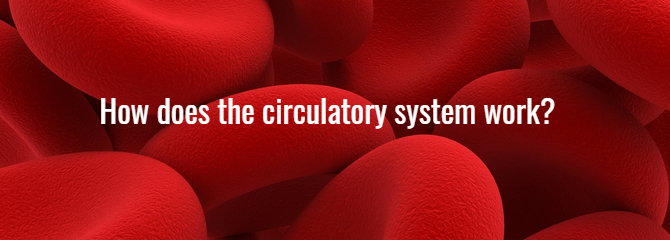
Increasingly regarded as an organ in its own right, the circulatory system supplies oxygen, nutrients and hormones via the blood to all the cells in the body, as well as eliminating harmful toxins.(1) the circulatory system – interchangeably known as the cardiovascular system – traverses to every corner of our biology, powering the liver, muscles, stomach, lungs, brain and waste and lymph systems.
Put simply, good circulation means good health.
Clearly, we owe a lot to our circulatory system. However, unless there’s an issue, we don’t give much thought to the 60,000 miles (yup, 60,000!) of blood vessels that comprise our circulatory system. Sure, we may think about heart health. But blood? not so much.
Still, beneath swathes of skin, the circulatory system ticks along quietly – a tenacious, but silent operator that never asks for much in return. and yet, this complex system is wholly deserving of our attention.
Circulation jargon
Arteries: blood vessels that deliver oxygen-rich blood away from the heart to the tissues of the body.
Veins: blood vessels that carry oxygen-poor blood back towards the heart.
Capillaries: tiny blood vessels that branch out from the arteries to form networks around body cells. The exchange of gases, nutrients and waste between blood and tissue occurs in the capillaries.
Composed of the heart, lungs, lymph tissue and blood vessels, the circulatory system is far from an inert web of tubes that merely transport blood around the body. This complex network also works synergistically with your organs, supports immune function, and serves as a vital waste-remover.
Heart
The hardest working muscle in the body, the heart is at the heart of the circulatory system. Beating around 100,000 times a day, the heart operates much like a pump, sending blood enriched with oxygen and nutrients through your arteries to your brain, bones and tissues to keep you alive. (2) Your heart is divided into the right side and left side. The division protects oxygen-rich blood (‘red blood’) from mixing with oxygen poor blood (‘blue blood’).
Lungs
Each time you inhale, your lungs fill with fresh oxygen. Subsequently, in a process called ‘gas exchange’, oxygen moves from your lungs to the left side of your heart. (3) From there, oxygen-rich blood is pumped through the arteries to supply tissues with oxygen. (4)
Blood vessels
Comprised of arteries, veins and capillaries, blood vessels reach every corner of your body. Blood travels in a simple loop – from the heart to every cell, then back to the heart again – in approximately one minute. (5)
Liver
The powerhouse of the digestive system, the liver knows when to detoxify the body, ushering out waste products via your bile and blood, and when to store nutrients and release them back into the blood. (6)
Waste system
Once the blood delivers oxygen and nutrients to your tissues and organs, it absorbs waste products, like lactic acid and carbon dioxide. From there, oxygen-poor blood travels back to the right-hand side of the heart through the veins, where it’s pumped to the lungs through the pulmonary arteries and breathed out as carbon dioxide. (7) Then, the cycle starts all over again.
References:
-
(1) 2020. Circulatory System: Facts, Function & Diseases. [ONLINE] livescience.com. Available at: https://www.livescience.com/22486-circulatory-system.html
-
(2) Bhf.org.uk. 2020. How Your Heart Works. [ONLINE] Available at: https://www.bhf.org.uk/informationsupport/how-a-healthy-heart-works
-
(3) 2020. Gas Exchange - Health Video: Medlineplus Medical Encyclopedia. [ONLINE] Medlineplus.gov. Available at: https://medlineplus.gov/ency/anatomyvideos/000059.htm.
-
(4) British Lung Foundation. 2020. How Does Oxygen Get Into The Bloodstream? - British Lung Foundation. [ONLINE] Available at: https://www.blf.org.uk/supportfor-you/how-your-lungs-work/oxygen-and-blood
-
(5) Lorne Laboratories Ltd. 2020. The Journey Of A Red Blood Cell. [ONLINE] Available at: https://www.lornelabs.com/news-events/blog/the-journey-of-ared-blood-cell
-
(6) Healthblog.uofmhealth.org. 2020. What Does My Liver Do? Liver Functions & How To Keep Yours Healthy. [ONLINE] Available at: https://healthblog.uofmhealth.org/what-does-the-liver-do
-
(7) Urmc.rochester.edu. 2020. About The Heart And Blood Vessels – Health Encyclopedia - University Of Rochester Medical Center. [ONLINE] Available at: https://www.urmc.rochester.edu/encyclopedia/content.aspx?ContentTypeID=90&ContentID=P01761
Related Posts
Disclaimer: The information presented by Nature's Best is for informational purposes only. It is based on scientific studies (human, animal, or in vitro), clinical experience, or traditional usage as cited in each article. The results reported may not necessarily occur in all individuals. Self-treatment is not recommended for life-threatening conditions that require medical treatment under a doctor's care. For many of the conditions discussed, treatment with prescription or over the counter medication is also available. Consult your doctor, practitioner, and/or pharmacist for any health problem and before using any supplements or before making any changes in prescribed medications.

Christine
Christine Morgan has been a freelance health and wellbeing journalist for almost 20 years, having written for numerous publications including the Daily Mirror, S Magazine, Top Sante, Healthy, Woman & Home, Zest, Allergy, Healthy Times and Pregnancy & Birth; she has also edited several titles such as Women’ Health, Shine’s Real Health & Beauty and All About Health.
View More




